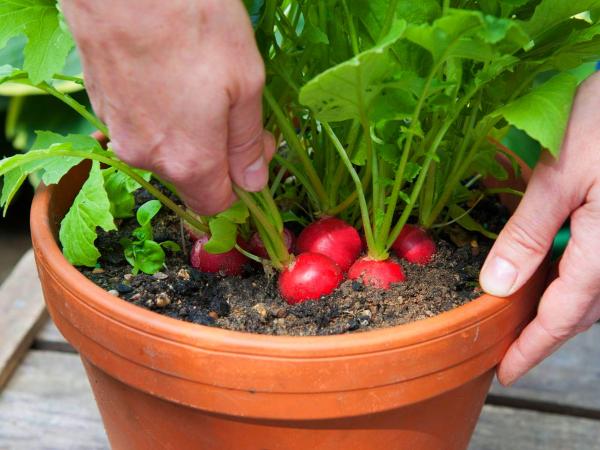Dripping Gardening January 30

Today I went to my inbox and found that three different people have emailed asking me about starting their spring garden early. “Is it safe,” “Is it okay?” and “Should I dare?”
I understand, our weather has been very mild so far this year and I too am hearing the siren call of spring. I too am just itching to get out in the garden and plant. But it really is too early to plant the typical spring garden veggies such as tomatoes and peppers. But the itch to garden is strong and it needs scratching! Besides, there is no law that says that one cannot plant this early – just do not be surprised if we get a young-plant-killing freeze in the next month or so.
After giving it some thought, considering it is not uncommon to get a good freeze in February and considering that we even had a March freeze last year, I have decided that the desire to garden is just too strong and that I have to plant something or I might just burst! I’ll avoid tomatoes as even a hint of frost would kill, our high temperatures are still too low for peppers, and it is way too soon for okra. I am going with radishes. I love radishes of all sorts, they are cold hardy, fast growing, and taste best when planted in a fall garden as they tend to get bitter in the summer garden. But I think I can get some in and harvested before it gets too hot for them, so, radishes it is!
Radishes are one of my favorite vegetables to have homegrown rather than store bought. In fact, there is almost nothing that beats the Radish for quick snacking! Usually at their best in November, I think that since radishes are so easy and quick to grow that I can enjoy some now. Most take about four weeks to mature so planted now I can enjoy several harvests before spring.
The big thing to remember about them is that the cooler the weather the less harsh or sharp the bite of the radish. In many areas they are a springtime favorite, but for our Texas gardens spring is a bit too late. Although I have been known to plant a few in early spring and I have enjoyed them.
No matter if you choose red, yellow, green, diakon, black… Oh my, what wonderful choices the radish offers – super delicious, colorful and incredibly healthy too, radish can’t be beat!
How nice it is to see these beautiful colors on your table during a cold and rainy day. The radish is juicy, crunchy and of course super healthy! So healthy in fact that you may feel guilty for not eating it more often.
Most commonly used as a garnish, the radish is one of the most versatile vegetables. A sweet root crop that is naturally spicy and crunchy, radishes can be eaten raw, cooked or pickled. Extremely flavorful, radishes are the perfect complement to many of your favorite dishes. They keep well in the fridge for several weeks, so they are very low maintenance.
Used in both Eastern and Ayurvedic healing practices radishes are believed to have toxin-purging effects. A natural cleansing agent, radishes are thought to help break down and eliminate stagnant food, toxins and free radicals that build up in our bodies. A “folk-medicine” traditional gall bladder cleansing remedy is to eat two radishes a day between meals for a month!
Due to their calming effect on the digestive system, radishes may help relieve bloating and indigestion. Daikon radishes specifically aid in the digestion of fats.
Radish studies have shown results indicating that radish consumption may dramatically aids in fighting viral infections when eaten while one is ill. Other studies go even further, high in vitamin C content and natural cleansing effects, these studies also suggest regular consumption of radishes can actually help prevent viral infections.
Highly regarded in eastern medicine for the thought of ability to decrease excess heat in the body. Radishes are high water content and with their high levels of vitamin C, phosphorus and zinc they nourish the tissues and can help the body hydrated even in the hottest of summer heat.
Sore throat? Eat a radish! Especially helpful during a cold, their natural spice and pungent flavor may aid in the elimination of excess mucus, helping clear the sinuses and sooth sore throats.
In the same vegetable family as broccoli and cabbage, radishes contain phytonutrients, fiber, vitamins and minerals that some believe to have health benefits. So, you might say that eating a radish a day keeps the doctor away.
Interested in yet another reason to eat plenty of radishes? How about this, several recent European studies show that if you munch on radishes you may count on seeing beautiful skin looking back at you in your morning mirror. This is believed to be because of the radishes ability to restore your nutrient balance from within, and make your face glow.
Some believe that the active phytonutrients in all radishes may help protect you from diabetes, thyroid disease, colds, flu and high blood pressure. Amazing!
Radishes are grown for the root, which usually is eaten raw, alone, or in salads. The leaves can also be eaten, especially when they are young and tender, I love them in my salads along with sliced radish.
Radishes can grow in partial shade, require very little room, and mature quickly. They are well suited to small gardens, flower beds, and containers. In the standard row-style garden a row 10 feet long is adequate for a family of four.
Radishes need loose, well-drained soil to allow the roots to expand easily. That can be a bit of a problem in our January soil as it is often hard and tightly packed. Our recent rains will have helped that a bit but if your soil is crusty, the roots will become misshapen. We don’t want that so to prepare the soil, remove rocks, trash, and large sticks from the planting area. Small pieces of plant material such as grass and leaves can be mixed into the soil to make it richer. Finally mix in a good helping of finished, rich, wonderful compost.
Make several plantings 8 to 10 days apart for a steady supply of radishes. To care for your radishes, scratch the soil around the plants lightly with a rake or hand tool to keep the soil from crusting. Water the plants well weekly if do not get much rain. Begin thinning the radishes when the roots start expanding. Pull every other plant out, wash them and toss them into a salad! The Those left in the row will continue to get bigger without being crowded. Keep the radishes free of weeds, which rob their weak root systems of nutrients and moisture.
So, there you go! It’s radish time for me, and don’t you think that your own body deserves a radish salad too? It will do wonders for you!


